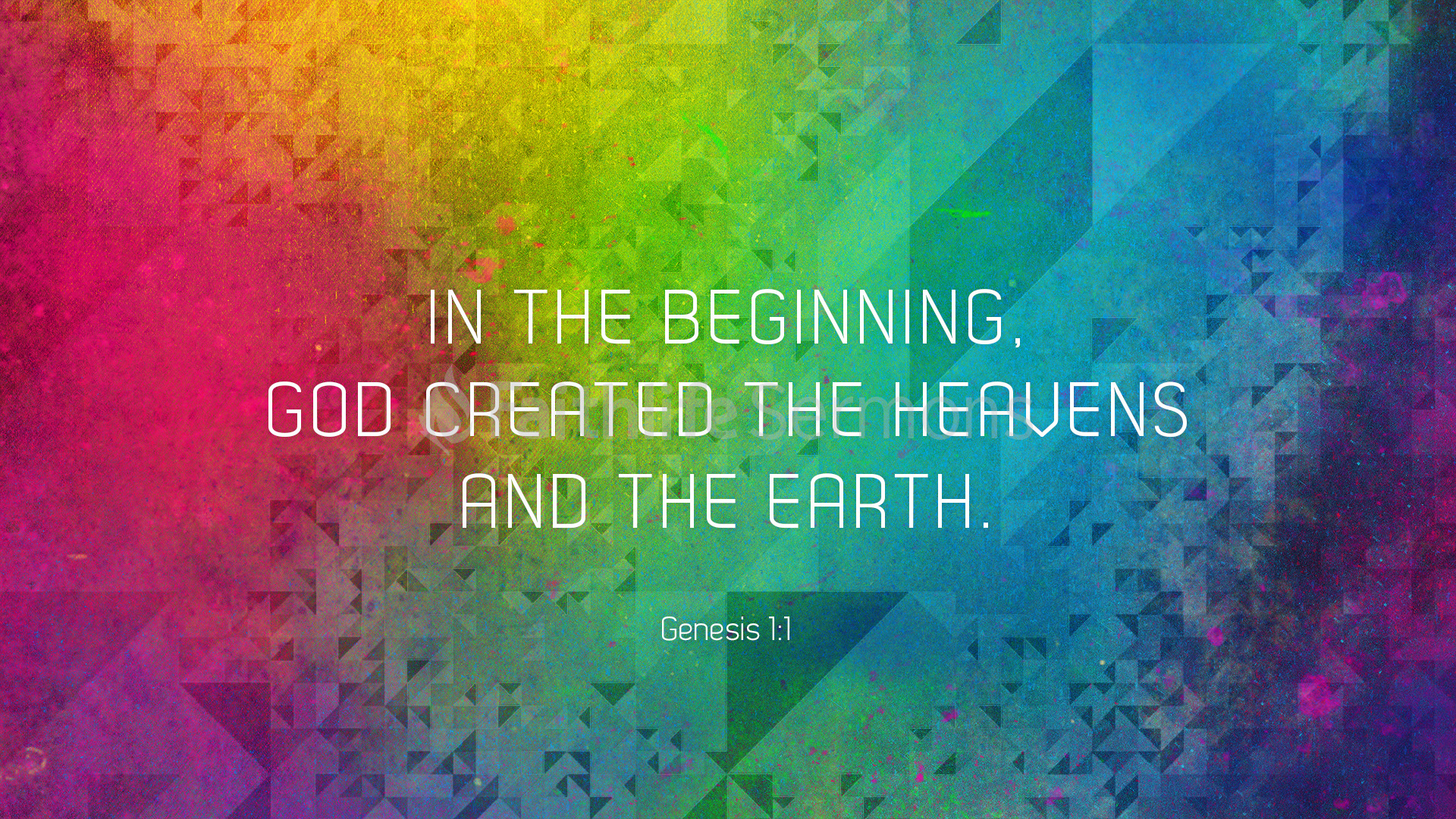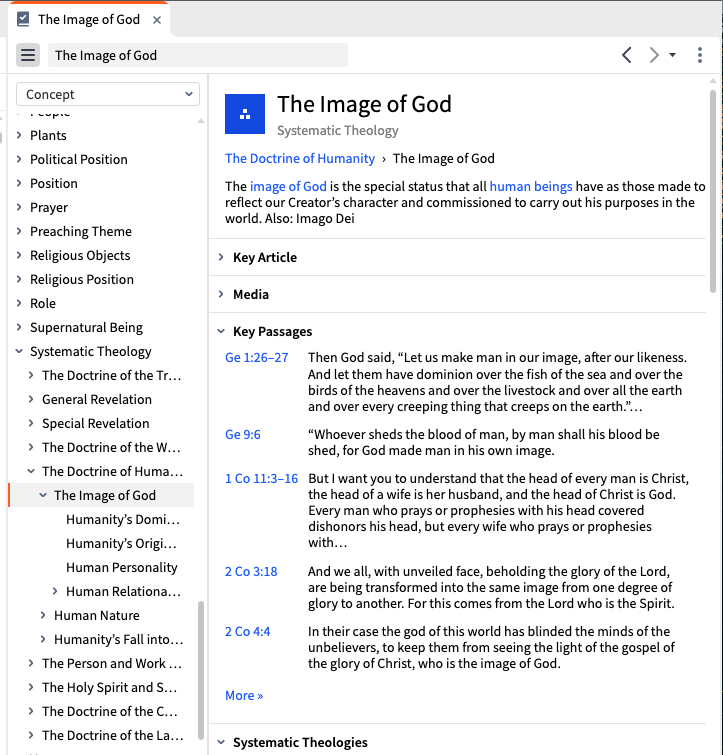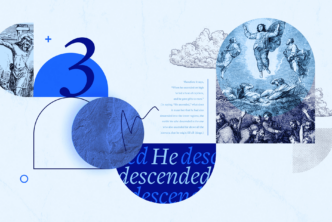It’s one of the most recognizable verses in the Bible—Genesis 1:1: “In the beginning, God created the heavens and the earth.” Maybe that’s because “In the beginning” and the thirty-one verses of Genesis 1 open the door to everything we know, our shared human experience. It comes right before Scripture outlines the days of creation.

So let’s take a closer look at how the Bible’s opening chapter describes what happened during creation week.
Day 1: Light (Gen 1:3–5)
God spoke light into being on the first day. (We’ll leave for other articles discussion of whether the Hebrew word for “day” in this chapter denotes a literal 24-hour day or a potentially lengthier “age.”)
What a day it was! Illumination for the first time ever. And as anyone who has ever experienced a glorious morning sunrise over the ocean or a mountain peak can understand, God “saw that the light was good” (v. 4).
It sure was. In Haydn’s choral masterpiece, the Oratorio, we hear that time described in musical form: “The first of days appears. Now chaos ends.”1
In other words, whew! So much for the disorder before creation.
Day 2: Atmosphere (Gen 1:6–8)
By day two it appears that God is defining the boundaries between wet and dry.
Besides tidying up creation, this new breathing space would support living things still to come—winged, four-footed, or otherwise.
So God had a lofty plan. In a word, let’s call it “sky” (v. 8).

Day 3: Land, seas, plants (Gen 1:9–13)
With a breathable atmosphere in place, much would happen on the third day—starting with the separation of elements between land and sea. As on day two, it seems this step served as creational housekeeping, and clearly not as an end in itself.
The stage was set for even greater things to come.
Then we see a botanical explosion, from simple mosses to colorful rhododendrons, hardy cactus to giant redwoods. Palm trees and Joshua trees and Monstera deliciosa. And everything in between.
Look at all that green! Did God have fun with the plant world? What else could explain Venus fly traps or black bat flowers?


Each created, growing thing added its own beauty, uniqueness, or usefulness to the ecosystems. Fruits and grains would serve as nutritious food for animals and—wait, are we getting ahead of ourselves?
At this stage God sounded quite pleased with the progress. Because once again he called it “good.” The first time he used that expression, though, was on day one. And we encounter “it was good” no less than six times in this chapter.
Not to mention one “very good,” but that’s saved for the end of the week, when God sits back to review the entire package.
Day 4: Lights in the sky (Gen 1:14–19)
Here’s where the wonders of astronomy came in, starting with the creation of a “greater light” (the sun) and a “lesser light” (the moon, reflecting the sun’s light), followed by uncounted stars and endless galaxies.
We’re talking about the Milky Way, nebulae, constellations, black holes, dwarf planets—the list goes on.
God on day four created quite a showcase. He put into place an awe-inspiring witness, too, as vast as (or perhaps more vast than) the microscopic world is tiny.
Because every pulsar, every supernova reveals God’s fingerprints. The prophet called us to “Lift up your eyes on high and see: who created these? He who brings out their host by number, calling them all by name; by the greatness of his might and because he is strong in power, not one is missing” (Isa 40:26).
The psalmist also reminded us how “The heavens declare the glory of God, and the sky above proclaims his handiwork” (Ps 19:1).
Day 5: Sea creatures and birds (Gen 1:20–23)
Anyone who has ever been snorkeling in tropical waters or birdwatching in the woods can guess why an entire day was devoted to creating natural wonders in water and sky. The marvelous intricacy of creatures with gills or feathers leaves us shaking our heads in wonder and giving praise to their maker.
“When I think of the fact that one artist created every aquatic critter I’ve ever met,” said Dr. Gordon Wilson, “and when I think about the fact that the creator cares for all of his creatures, every minute of every day, I am overwhelmed with gratitude.”2
And just like the stars and planets, the creation Professor Wilson mentions also serves as an unmistakable witness to the world. Because “his invisible attributes, namely, his eternal power and divine nature, have been clearly perceived, ever since the creation of the world, in the things that have been made” (Rom 1:20).
Day 6: Land creatures—and humans! (Gen 1:24–31)
At last the day arrived when God created land animals, from the tiniest field mouse to the three-toed sloth to a four-ton African elephant.
Along with the creation of animals came—finally—humanity!
Here was something way different. Unlike plants and animals (dazzling and diverse as they were), men and women would be created “in the image of God” (v. 27).
There’s a deep subject buried in that phrase. Books have been written about the distinction. (You’ll see a couple at the bottom of this article.)
And, of course, dig into the Word yourself—look up “imago dei” in the (free) Logos Bible app’s Factbook tool to see how the scriptures explain human nature in the image of God.
Click to study imago dei online.

As theologian Mark Ross put it, “This likeness is so very special that it sets them (humans) apart from all the other creatures God made.”3
And it’s the image of God that makes all the difference in how we can relate to the Creator.
Day 7: Taking a break (Gen 2:1–3)
God paused from creation work on the final day of creation week. Was he tired after all that effort? Catching his breath from painting so many colors on tropical fish and jungle parrots?
Hardly! Remember that one of God’s attributes is his unlimited power—his omnipotence. So by “resting,” the scriptures simply mean that God ceased from creating. And the seventh-day rest was God setting an example for his creation, a pattern for the natural world.
Keep in mind how we’re told in the Exodus account, “Remember the Sabbath day, to keep it holy. For in six days the Lord made the heavens and the earth, the sea and all that is in them, and rested on the seventh day; therefore the Lord blessed the Sabbath day and made it holy” (Exod 20:8, 11).
The seven-day model
There’s a built-in reality behind the seven days of our creation story. As the Faithlife Study Bible explains, “The creation week serves as the model for the six-day week and Sabbath rest note in Exodus 20:11 and other Israelite laws.”
But more than once, political rulers have ignored the biblical pattern and attempted to introduce weeks of a different duration.
After their 1789 revolution, French authorities tried 10-day weeks. They thought it might help distance the new revolutionary society from the old “religious” ways.
Perhaps similarly, Soviets in the USSR tried five- and six-day weeks in the 1920s and 30s.4
Both attempts were abandoned after only a few years. And there’s a reason why they didn’t work. Could it be that we’re simply hard-wired for a seven-day week—a pattern established in the beginning?
Digging deeper
There’s much more to explore about the week of creation and what it means to our understanding of and relationship to God. Here are several more sources to explore.
Perspectives on Creation: Five Views on Its Meaning and Significance. This 5-hour video course features five leading Old Testament scholars discussing God’s work in creation. Available through Logos in video or audio format.
The Riot and the Dance: Water. Part of a unique video series that glorifies God through the wonders of nature.
What the Image Is NOT. Portions of a video lecture from the late Michael S. Heiser, focusing on the meaning behind “made in the image of God.” Heiser served as Logos’s scholar-in-residence from 2004 to 2019.
Mobile Ed: TH331 Perspectives on Creation: Five Views on Its Meaning and Significance (5 hour course)
Regular price: $149.99
Mobile Ed: TH331 Perspectives on Creation: Five Views on Its Meaning and Significance (5 hour course – audio)
Regular price: $49.99
Related articles
- Every Person an Icon: Why Creation Signifies Dignity for All
- What Is Sabbath, and Does It Even Matter Anymore?
- Sea Monsters in the Bible: Did God Fight a Literal Serpent at Creation?
What the Creation Account from Genesis 1–2 Reveals about Humankind

- Franz Joseph Haydn, “Words of Haydn’s oratorio of the Creation: to be performed by the Enfield Musical Society,” Archive.org. https://archive.org/details/wordsofhaydnsora00enfi/mode/2up.
- Gorilla Poet Productions, “Water,” Angel Studios, video, 1:24, https://www.angel.com/watch/riot/episode/cf71a909-9ac5-498e-8e80-1b6ca7ba2de3/season-1/episode-2/water.
- Mark Ross, “Imago Dei,” Ligonier Ministries, March 25, 2013, https://www.ligonier.org/learn/articles/imago-dei.
- Nick Baker and Joey Watson, “Where Does the Seven-Day Week Come from and Why Does It Govern Our Lives?” Australian Broadcasting Network, January 4, 2022, https://www.abc.net.au/news/2022-01-05/how-did-the-seven-day-week-come-to-govern-our-lives/100672194.





